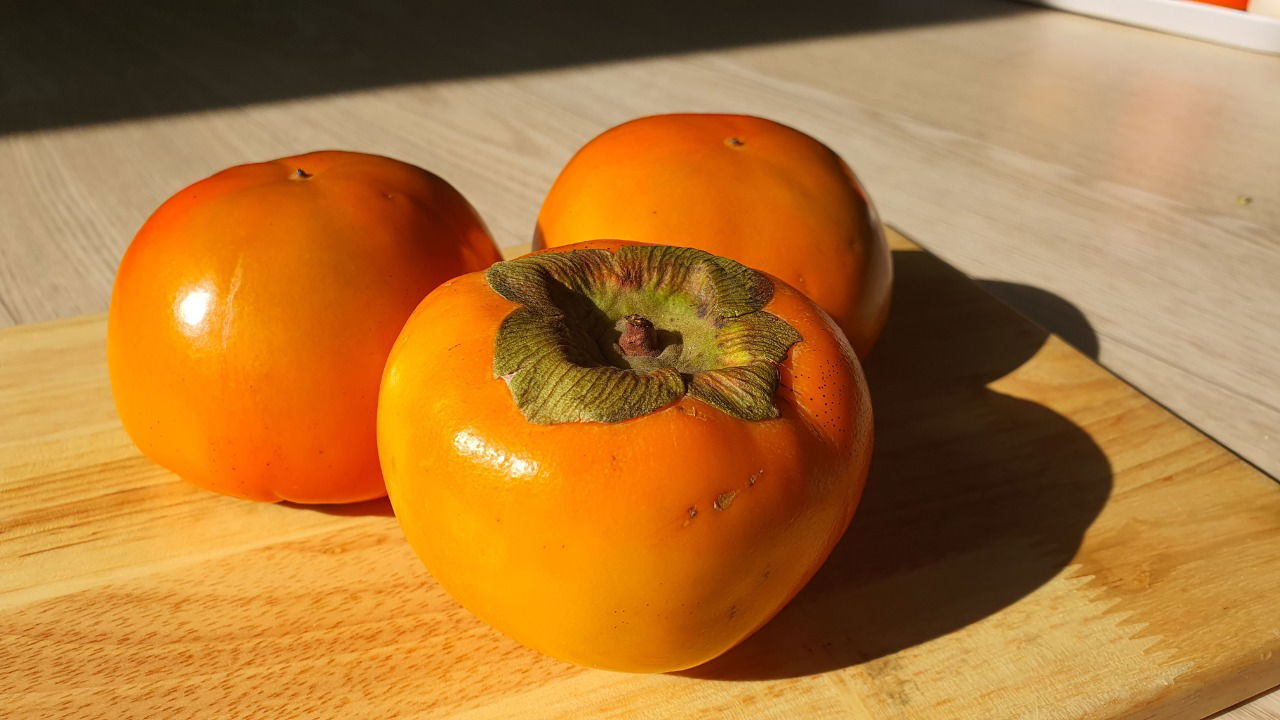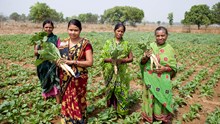
Persimmon (Diospyros kaki), popularly known in India as Japani phal or Japanese fruit, is an emerging temperate fruit crop gaining popularity among farmers and fruit lovers alike. Belonging to the family Ebenaceae, persimmon is renowned for its sweet, succulent flavor and attractive appearance. The fruit resembles ripened tomatoes in shape and color, which makes it appealing to consumers, especially when it hits the market during the off-season for many other fruits. Its vibrant orange hue and rich taste make it a delightful delicacy that is eagerly awaited in urban fruit markets.
Origin and Botanical Features of Persimmon
Persimmon is believed to have originated in China and later spread to Japan, Korea, and India. In India, the fruit is native to certain Himalayan regions and the Khasi Hills in the northeast. The tree was introduced more widely during the early 20th century by European settlers. It is a winter-hardy, deciduous tree that exhibits a compact and spreading growth habit. Apart from its fruit value, the tree is also admired for its ornamental appeal—particularly during autumn, when its foliage turns brilliant shades of red and orange.
Global and Indian Distribution
Persimmon is primarily cultivated in countries like China, Japan, Brazil, and Italy, which are considered the major producers. The fruit is also grown in minor producing countries including the United States, Spain, Egypt, Australia, and India. In India, its cultivation is largely concentrated in the temperate regions of Himachal Pradesh, Jammu and Kashmir, Uttarakhand, and some parts of Tamil Nadu. The fruit’s growing popularity can be attributed not only to its taste and aesthetic value but also to its nutritional richness and relative ease of cultivation.
Nutritional Value
Persimmon is a nutrient-dense fruit that offers several health benefits. It is low in calories and fats, but is an excellent source of dietary fiber, Vitamin C, and natural antioxidants. These properties make it a health-friendly fruit choice. The ripe fruit has an exceptional flavor and is rich in natural sugars, making it popular for fresh consumption.
Soil and Climatic Requirements
Persimmons are adaptable to a range of soil types, but well-drained sandy loam soils enriched with organic matter are considered ideal for cultivation. The optimal soil pH ranges from 6.5 to 7.5. Before planting, the land should be ploughed deeply and prepared thoroughly to ensure a healthy root environment. The tree thrives in temperate climates with moderate winters and warm summers. It is relatively drought-resistant but performs best under conditions of uniform moisture during the fruiting stage.
Propagation and Planting Techniques
Persimmon is usually propagated using grafting or budding techniques. The Indian persimmon (Diospyros lotus), locally known as Amlook, is commonly used as the rootstock. Seeds are sown at the onset of spring as low temperatures can hinder germination. Nursery raising is preferably done in a partially shaded area that is protected from insect pests. Chip budding, ideally done in April, has shown high success rates. Alternatively, tongue grafting can also be done in early spring.
Young plants are usually transplanted with the arrival of spring. The planting layout should be carefully designed depending on the growth habit of the variety. Trees are spaced at 4 meters by 4 meters to 6 meters by 6 meters. In hilly terrains, the contour planting method is recommended to prevent soil erosion. Under favorable conditions, grafted plants begin bearing fruit within five years of planting.
Fertilization and Nutrient Management
A balanced fertilizer regimen is crucial for achieving optimal tree health and fruit yield. A combination of 4 to 6 percent nitrogen, 8 to 10 percent phosphorus, and 3 to 6 percent potassium is recommended, applied at the rate of 500 grams per tree for each year of age. While most growers prefer applying the fertilizer in spring, it may also be split into two doses—one in spring and the other in mid-July. Caution should be exercised to avoid excessive application of nitrogen, as this can lead to premature fruit drop.
Pruning and Training
Pruning is essential for developing a strong tree structure and improving light penetration within the canopy. When young trees are planted, they should be pruned back to a height of 2.5 to 3 feet. As the tree matures, annual pruning should be carried out for the first four to five winters to shape a healthy framework. Weak branches that are likely to snap under fruit load should be removed. In cases where trees become unproductive or overbearing, rejuvenation pruning by cutting back the canopy is recommended to restore vitality.
Irrigation Practices
Irrigation is important during the early growth phase and fruit development period. On light soils, irrigation every three weeks is suggested, while on heavier soils, a monthly watering schedule is sufficient. During the rainy season, irrigation may be withheld. Uniform soil moisture is particularly important during flowering and fruit-setting stages to avoid yield losses.
Intercropping and Land Utilization
Since persimmon trees take about five years to bear fruit, intercropping can be practiced in the initial years to optimize land use. Suitable intercrops include pulses, leafy vegetables, and grasses, which do not compete heavily with the trees for resources and can contribute to soil health.
Harvesting, Yield, and Storage
The fruit is harvested when it turns bright red, typically in the month of October. It should be slightly soft but not fully ripe at harvest. On average, a mature persimmon tree yields between 150 to 200 kilograms of fruit annually, though this may vary depending on the variety and cultivation practices. Being a climacteric fruit, persimmon can be stored for two to three months at a temperature range of 0 to 2°C. However, cold damage and fungal infections like Alternaria alternata may affect storage life.
Processing and Utilization
Persimmon is highly versatile in culinary applications. The ripe pulp can be eaten fresh, scooped out with a spoon, or added to fruit salads. It also pairs well with ice cream, yogurt, and baked goods such as cookies, cakes, and puddings. It can be processed into jams, marmalades, or blended into creamy desserts with cheese, honey, and orange juice.
Persimmon cultivation holds immense potential for diversification in temperate horticulture. With minimal maintenance, high aesthetic value, and growing market demand, it is an ideal crop for hill farmers and commercial growers alike. With proper training, pest control, and post-harvest management, persimmon can become a rewarding fruit crop in India’s cooler regions.
















